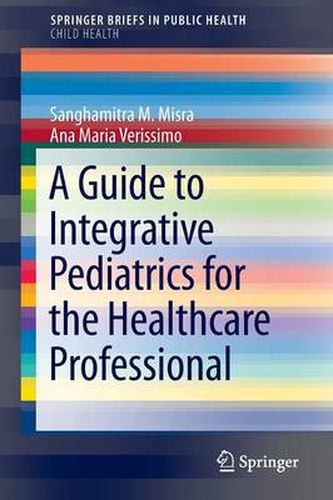Readings Newsletter
Become a Readings Member to make your shopping experience even easier.
Sign in or sign up for free!
You’re not far away from qualifying for FREE standard shipping within Australia
You’ve qualified for FREE standard shipping within Australia
The cart is loading…






This title is printed to order. This book may have been self-published. If so, we cannot guarantee the quality of the content. In the main most books will have gone through the editing process however some may not. We therefore suggest that you be aware of this before ordering this book. If in doubt check either the author or publisher’s details as we are unable to accept any returns unless they are faulty. Please contact us if you have any questions.
In response to the rise in chronic medical conditions–and the growing use of complementary and alternative therapies–among pediatric and adolescent patients, healthcare practitioners are taking a serious look at pediatric integrative medicine (PIM). Although it dovetails with current concepts of preventive medicine, wellness, and patient control, PIM is still an evolving field with its own particular challenges and opportunities.
A Guide to Integrative Pediatrics for the Healthcare Professional explores its subject through the more familiar lens of integrative medicine. This concise comprehensive resource synthesizes the knowledge base on a range of therapies commonly associated with PIM, such as acupuncture, herbal remedies, clinical hypnosis, yoga, homeopathy, and therapeutic massage, with findings on their effective use with children. Case examples illustrate uses of PIM modalities with allopathic medicine to treat young patients at various developmental stages, and the authors pinpoint safety and appropriateness concerns, answer licensing questions, and note clinical areas requiring further study. The wide-ranging information contained here will help support interest in PIM at the research, training, and practice levels. Features of the Guide:
An introduction to basic concepts in PIM. Trends in IM/PIM education. A survey of complementary and alternative therapies, including biologically-based, body-based, mind-body, energy-based, and alternative whole systems. Current evidence for IM in treating common pediatric conditions. The future of integrative pediatrics. References and links for further information.
Offering a front-row seat to the continued expansion of the field, A Guide to Integrative Pediatrics for the Healthcare Professional is a salient text not only for pediatricians but for all healthcare practitioners tasked with improving children’s wellbeing. <
$9.00 standard shipping within Australia
FREE standard shipping within Australia for orders over $100.00
Express & International shipping calculated at checkout
This title is printed to order. This book may have been self-published. If so, we cannot guarantee the quality of the content. In the main most books will have gone through the editing process however some may not. We therefore suggest that you be aware of this before ordering this book. If in doubt check either the author or publisher’s details as we are unable to accept any returns unless they are faulty. Please contact us if you have any questions.
In response to the rise in chronic medical conditions–and the growing use of complementary and alternative therapies–among pediatric and adolescent patients, healthcare practitioners are taking a serious look at pediatric integrative medicine (PIM). Although it dovetails with current concepts of preventive medicine, wellness, and patient control, PIM is still an evolving field with its own particular challenges and opportunities.
A Guide to Integrative Pediatrics for the Healthcare Professional explores its subject through the more familiar lens of integrative medicine. This concise comprehensive resource synthesizes the knowledge base on a range of therapies commonly associated with PIM, such as acupuncture, herbal remedies, clinical hypnosis, yoga, homeopathy, and therapeutic massage, with findings on their effective use with children. Case examples illustrate uses of PIM modalities with allopathic medicine to treat young patients at various developmental stages, and the authors pinpoint safety and appropriateness concerns, answer licensing questions, and note clinical areas requiring further study. The wide-ranging information contained here will help support interest in PIM at the research, training, and practice levels. Features of the Guide:
An introduction to basic concepts in PIM. Trends in IM/PIM education. A survey of complementary and alternative therapies, including biologically-based, body-based, mind-body, energy-based, and alternative whole systems. Current evidence for IM in treating common pediatric conditions. The future of integrative pediatrics. References and links for further information.
Offering a front-row seat to the continued expansion of the field, A Guide to Integrative Pediatrics for the Healthcare Professional is a salient text not only for pediatricians but for all healthcare practitioners tasked with improving children’s wellbeing. <